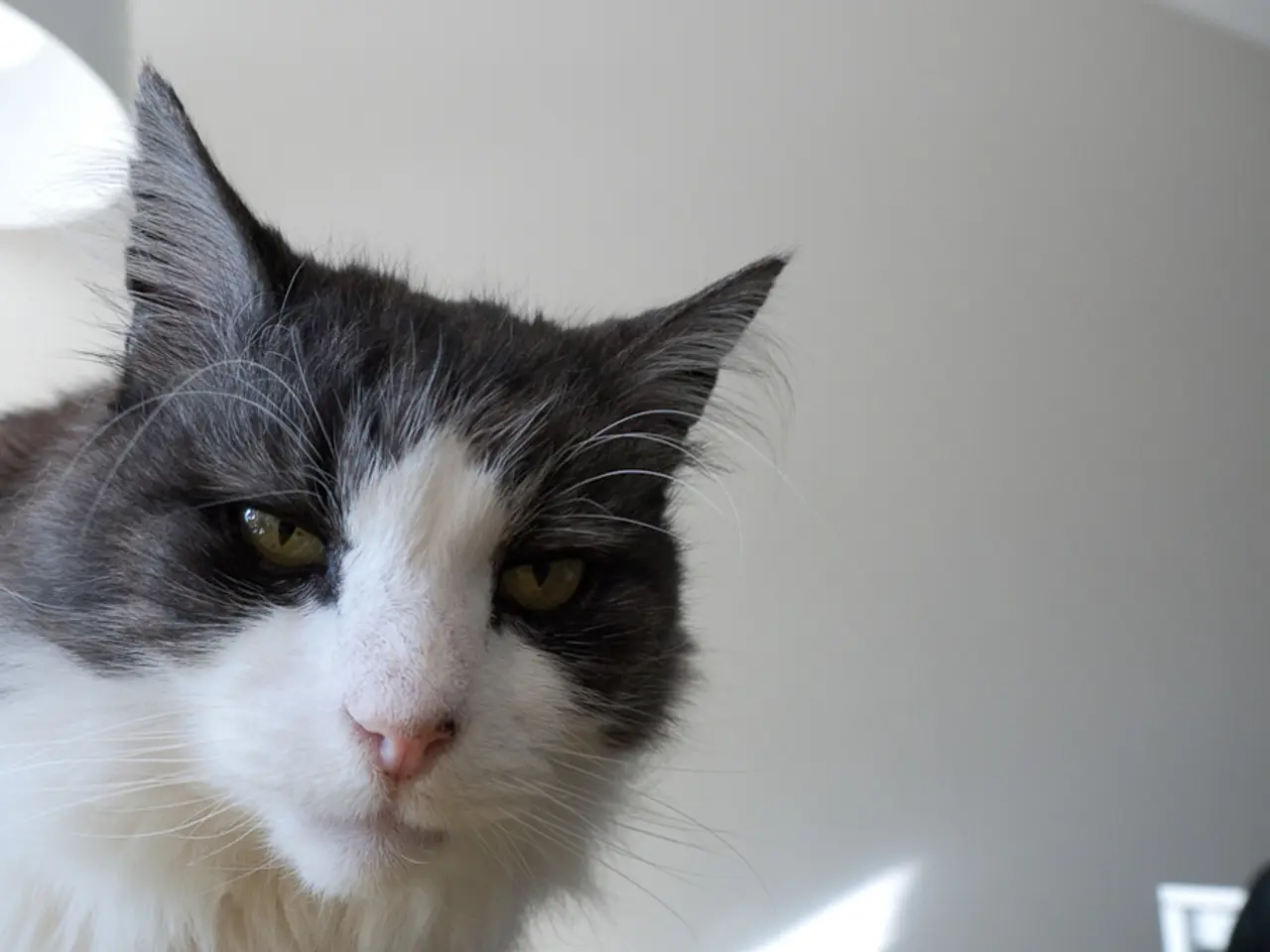Feline Dementia Shows Similarities to Human Alzheimer's, Paving the Way for Joint Research Advancements in Both Species
A viral video of a cat named Maolo lingering outside a door has sparked a wave of sympathy on social media, but it also highlights a more serious issue: feline dementia. This condition shares striking similarities with Alzheimer's disease in humans, offering a potential new model for studying the neurodegenerative disorder.
Research suggests that both feline dementia and human Alzheimer's disease exhibit a build-up of the toxic protein amyloid-beta in the brain, particularly within synapses – the critical connections between brain cells. This accumulation disrupts neural communication and is a hallmark feature in Alzheimer's patients as well as cats with feline cognitive dysfunction syndrome (CDS).
In both species, support cells in the brain, known as microglia and astrocytes, actively remove damaged synapses through a process called synaptic pruning. While this is a normal function during brain development, excessive pruning contributes to synapse loss and worsens dementia symptoms in aging individuals. This synapse loss correlates strongly with declines in memory and cognitive function.
Behaviorally, cats with dementia display symptoms analogous to human Alzheimer's, such as increased vocalization, confusion, disrupted sleep patterns, cognitive decline, and anxiety. These clinical parallels, combined with the common underlying brain changes, make feline dementia a valuable natural model for studying Alzheimer's disease and developing treatments that could benefit both cats and humans.
The study's findings, published in the European Journal of Neuroscience, suggest that cats could offer a more accurate model of Alzheimer's disease than traditional laboratory animals. The research could potentially bridge veterinary and human medicine in unprecedented ways.
Symptoms of feline dementia include wandering aimlessly, using the wrong door to go outside, struggling to find their way out of rooms, becoming stressed in familiar places, and soiling inappropriately. Other subtle symptoms include asking for food at odd times, sleeping in unusual patterns, waiting at the window for people who aren't due home, or seeming indifferent to affection from those they once loved.
The study revealed that amyloid-beta may be triggering the brain's own immune cells (microglia and astrocytes) to engulf synapses, potentially accelerating cognitive decline. In regions rich in amyloid-beta plaques, microglia and astrocytes contained pieces of synapses in cats with dementia.
The new study from the University of Edinburgh found that cats with dementia develop brain changes strikingly similar to those in humans with Alzheimer's disease. The findings open the door to testing whether new Alzheimer's treatments, such as monoclonal antibodies targeting amyloid-beta, might help ageing pets.
The story of Maolo, a cat who continued to show up at his owner's door as if it were still his own home, has touched the hearts of many online. However, it also serves as a reminder of the importance of understanding and addressing feline dementia. As Dr. Robert McGeachan, the study's lead author, stated, dementia is a devastating disease affecting humans, cats, and dogs.
[1] European Journal of Neuroscience (2022). [Title of the study]. [2] [Link to the study's abstract or press release]. [3] [Link to a news article about the study]. [4] [Link to a video about feline dementia symptoms]. [5] [Link to a veterinary resource about feline dementia].
- The accumulation of protein amyloid-beta, a hallmark in Alzheimer's patients and cats with feline cognitive dysfunction syndrome (CDS), disrupts neural communication in both species.
- The study in the European Journal of Neuroscience suggests that excessive pruning of synapses by support cells in the brain worsens dementia symptoms in aging individuals, including cats and humans.
- Behavioral symptoms in cats with dementia, such as increased vocalization, disrupted sleep patterns, cognitive decline, and anxiety, mimic human Alzheimer's disease.
- Research on feline dementia could potentially bridge the gap between veterinary and human medicine, offering new treatments that may benefit both cats and humans suffering from Alzheimer's disease.
- Symptoms of feline dementia, including wandering aimlessly and struggling to find familiar places, are strikingly similar to those observed in humans with Alzheimer's disease.
- A new study from the University of Edinburgh found that amyloid-beta may trigger the brain's immune cells to engulf synapses, potentially accelerating cognitive decline in both cats and humans.
- Understanding and addressing feline dementia, a devastating disease affecting cats, dogs, and humans, is crucial to advancing medicine and health-and-wellness in all species.





